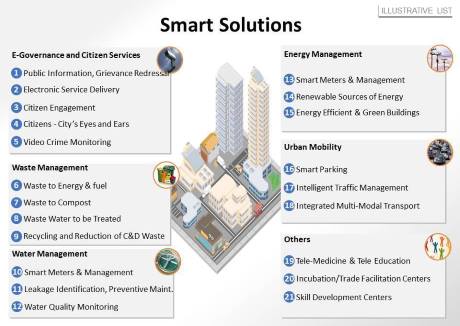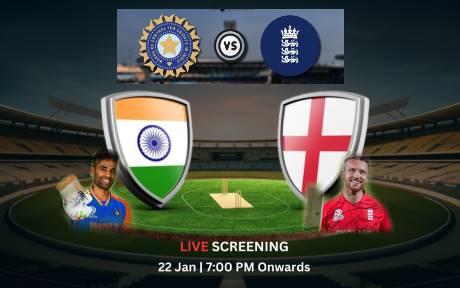India Business Information
India Latest

First 20 smart cities: From Jaipur to Kochi, here’s the full list
Smarty cities: Some of the parameters on the basis of which the decision was taken are feasibility, result orientation, citizen participation, smartness of proposals etc.
| The cities are: | |
| 1. Bhubaneshwar | 11. Devangere |
| 2. Pune | 12. Indore |
| 3. Jaipur | 13. Coimbatore |
| 4. Surat | 14. Kakinada |
| 5. Kochi | 15. Belgaum |
| 6. NDMC (New Delhi) | 16. Udaipur |
| 7. Ahmedabad | 17. Guwahati |
| 8. Jabalpur | 18. Chennai |
| 9. Vizag | 19. Ludhiana |
| 10. Solapur | 20. Bhopal |

Smart Cities Mission
Smart Cities Mission of the Government is a bold, new initiative. It is meant to set examples that can be replicated both within and outside the Smart City, catalysing the creation of similar Smart Cities in various regions and parts of the country.
The core infrastructure elements in a smart city would include:
i. adequate water supply,
ii. assured electricity supply,
iii. sanitation, including solid waste management, iv. efficient urban mobility and public transport,
v. affordable housing, especially for the poor, vi. robust IT connectivity and digitalization,
vii. good governance, especially e-Governance and citizen participation, viii. sustainable environment,
ix. safety and security of citizens, particularly women, children and the elderly, and
x. health and education.
Smart City Features
Some typical features of comprehensive development in Smart Cities are described below.
i. Promoting mixed land use in area based developmentsplanning for unplanned areas containing a range of compatible activities and land uses close to one another in order to make land use more efficient. The States will enable some flexibility in land use and building bye-laws to adapt to change;
ii. Housing and inclusiveness - expand housing opportunities for all;
iii. Creating walkable localities reduce congestion, air pollution and resource depletion, boost local economy, promote interactions and ensure security. The road network is created or refurbished not only for vehicles and public transport, but also for pedestrians and cyclists, and necessary administrative services are offered within walking or cycling distance;
iv. Preserving and developing open spaces - parks, playgrounds, and recreational spaces in order to enhance the quality of life of citizens, reduce the urban heat effects in Areas and generally promote eco-balance;
v. Promoting a variety of transport options - Transit Oriented Development (TOD), public transport and last mile para-transport connectivity;
vi. Making governance citizen-friendly and cost effective - increasingly rely on online services to bring about accountability and transparency, especially using mobiles to reduce cost of services and providing services without having to go to municipal offices. Forming e-groups to listen to people and obtain feedback and use online monitoring of programs and activities with the aid of cyber tour of worksites;
vii. Giving an identity to the city - based on its main economic activity, such as local cuisine, health, education, arts and craft, culture, sports goods, furniture, hosiery, textile, dairy, etc;
viii. Applying Smart Solutions to infrastructure and services in area-based
Popular Post(s)...
/Sports
/Online Shopping
/Online Shopping
/Online Shopping
/Sports
Menu
- IPL
- World University rankings 2022, 2023
- Weight Loss
- Website Monetization
- United States Free Business Directory
- Tech Support
- Study in US
- Study in United Kingdom
- Study in India
- Sports
- Pets Name
- Movie and Theatres
- London Business Directory
- Aadhaar Services
- Indian Food Recipes
- Home
- American Food Recipes
- Astrology
- Best Hits Of Madhuri Dixit
- Bollywood Celebrities
- Business India
- Corona News
- DTDC Courier Tracking
- Ecom Express Tracking
- Fully Funded UK Scholarships
- Hit Video Songs
- India Track Your Courier
- States-and-Capitals
- Tamilnadu-Business
- Currency Exchange
- Online Shopping
- Baby Names by Birth Star
 ( 5 ) by 1 User(s).
( 5 ) by 1 User(s).



